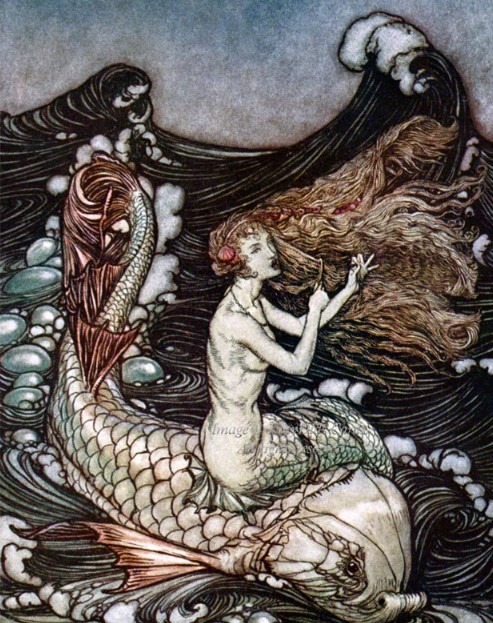
Images of human-fish hybrids date back to ancient civilisations. The concept remains topical and mermaids continue to feature in contemporary culture. In 1987, Disney released The Little Mermaid, a musical animation adapted from the much darker Hans Christian Anderson fairy tale published in 1836. Building on the film’s success, there’s a Little Mermaid experience at Disney World, with a non-animated version of the film released in 2023.
in 2008, Hayao Miyazaki and Studio Ghibli released Ponyo. In this animation, the young boy Sosuke meets the daughter of a wizard and a sea-goddess, who appears half-fish and half-human. With more of Disney-style happy ending, the film deals with darker issues around pollution and ageing but continues the trope of a mermaid wanting to become human. Why don’t the humans in these stories ever strive to become more like fish?
Today, ‘real’ mermaids swim in replica ocean tanks wearing professionally designed and produced tails. Watching them train and perform demonstrates huge levels of skill and preparation, not to mention keeping your eyes open beneath chlorined water and always smiling, despite the physical strains. So you want to be a mermaid? offers a useful introduction to anyone thinking of this as a career!
The World Mermaid Championships include The Merlympics and when you think about it, the sport makes sense. It combines athleticism with grace and demands huge amounts of training, on both land and water. If you like competitive sports such as gymnastics and swimming, ‘mermaiding‘ has it all.
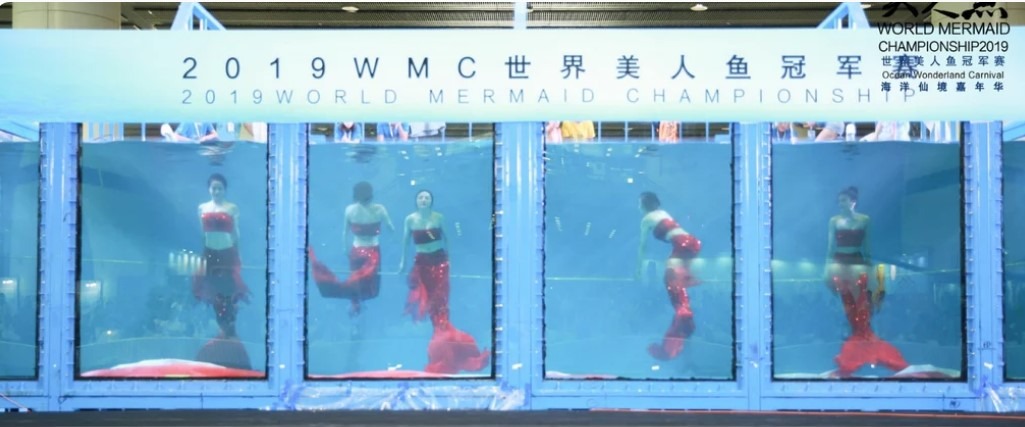
I’m fascinated by how mermaids have survived for so long. They’ve been culturally reinvented over millienia. Names and stories vary, sometimes contradict, but multiple images from the past show a range of half-human/half-fish hybrids.
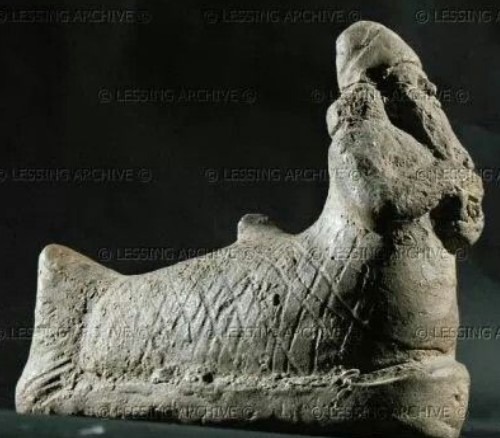
The Apkallū were seven wise god or sages who taught civilisation skills to the ancient Mesopotamians. The first of these was the Kulullu fish-man. Also named Uanna or Oannu, images show his ‘fishness’ appears in different ways but the association is clear.
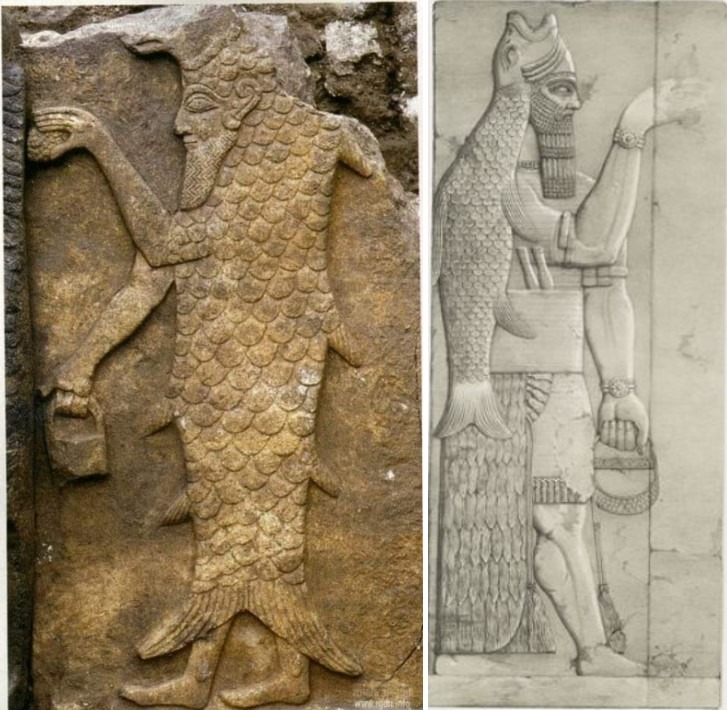
Atargatis was an early female fish goddess. Also known as Derceto, and originally a Syrian symbol of fertilit. she is shown with legs but, over the centuries, images lost their lower human parts and began to resemble the traditional mermaid we know today.
This beautiful painting by John William Waterhouse (1900) shows the more familiar mermaid of legends and fairy tales. While some could shapeshift into human form, marry, and have children, others were permanently caught between land and water, unable to fully belong to either and destined for eternal loneliness.
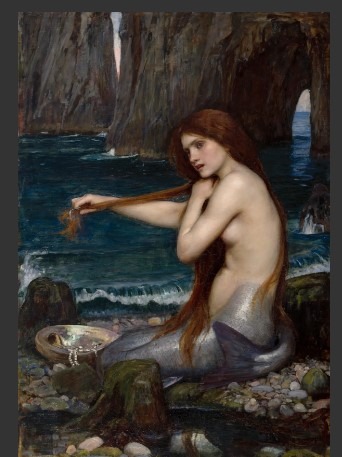
As well as the disneyfication of mermaids, Starbucks adopted the image of a split tail mermaid in 1971. The logo has been adapted over the years but to this day, mermaids remain associated with their coffee cups.

The split tail is interesting.
It’s seen in church frescos and carvings, sometimes with ambiguous gender.
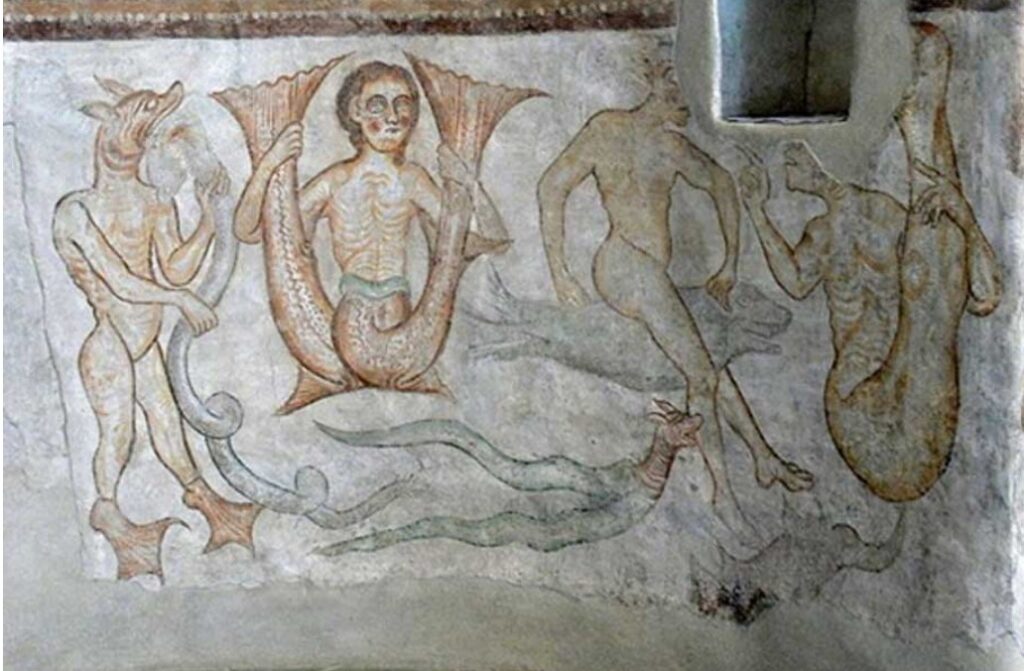
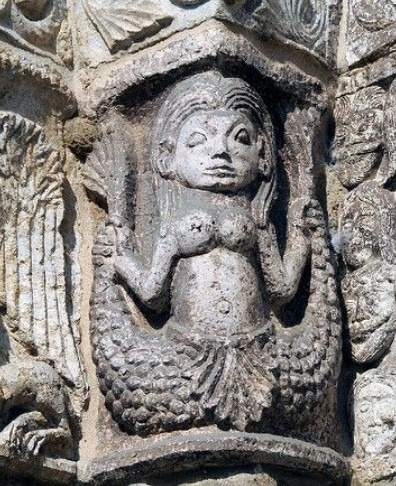
Carving from San Michele, in Parvia, Italy
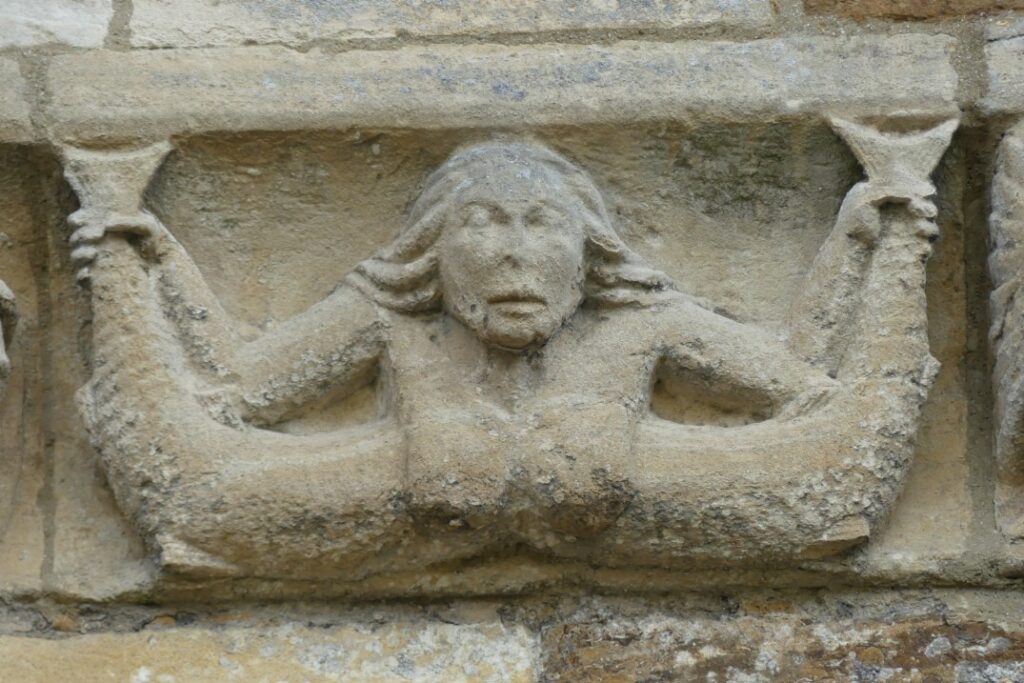
Something about the mermaid holding the end of both tails reminds me of the sheela na giggs, explored in a previous post Let’s talk about Sheela na giggs.
Back to ancient Greek mythology, which is full of strange half-human/half-fish creatures.
Triton was a son of Poseidon and Amphitrite, herself one of the fish tailed Nereids, and sister to Thetis, mother of Achilles. Fish-tailed Triton lived underwater and calmed rough seas by blowing a conch shell.
There is Glaucus, Hylas, a plethora of nymphs and other watery spirits, and there’s Thessalonike. Sister to Alexander the Great, she was said to have turned into a mermaid after her death. Legend tells us she lived in the Aegean Sea and constantly asked sailors if Alexander was still alive. If the sailors said yes, they were safe. If they told the truth, that he was dead, she would destroy the ship, drowning everyone on board.
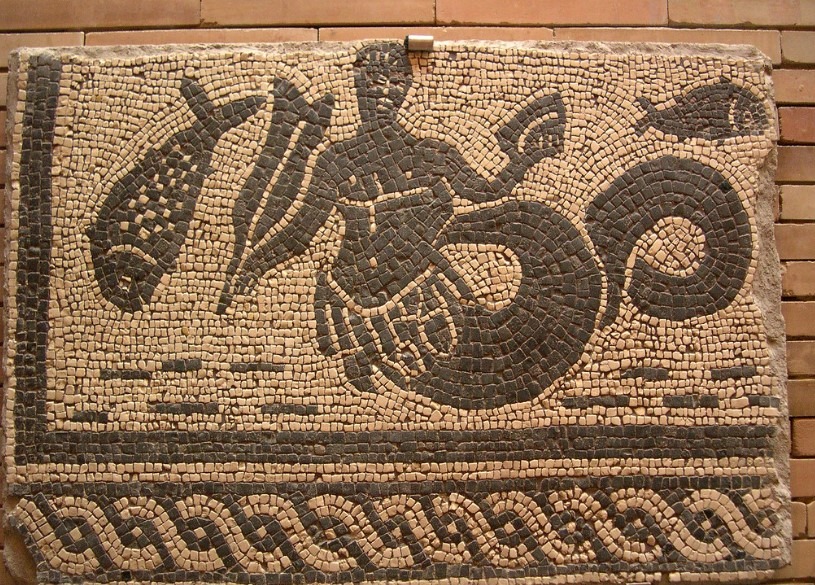
Greek mythology also has tales of sirens. These were originally half-female/half-bird bybrids who enchanted passing sailors with their song. Becuse their voices were so beautiful the men were enchanted, jumped overboard to join them and drowned.
A famous tale is in Homer’s Odyssey where Odysseus, travelling home after the Trojan war, had to sail past past the sirens. Telling his men to block their ears with beeswax, he had himself tied to the ship’s mast so he wouldn’t them but could boast about the experience later.
He was that sort of guy!
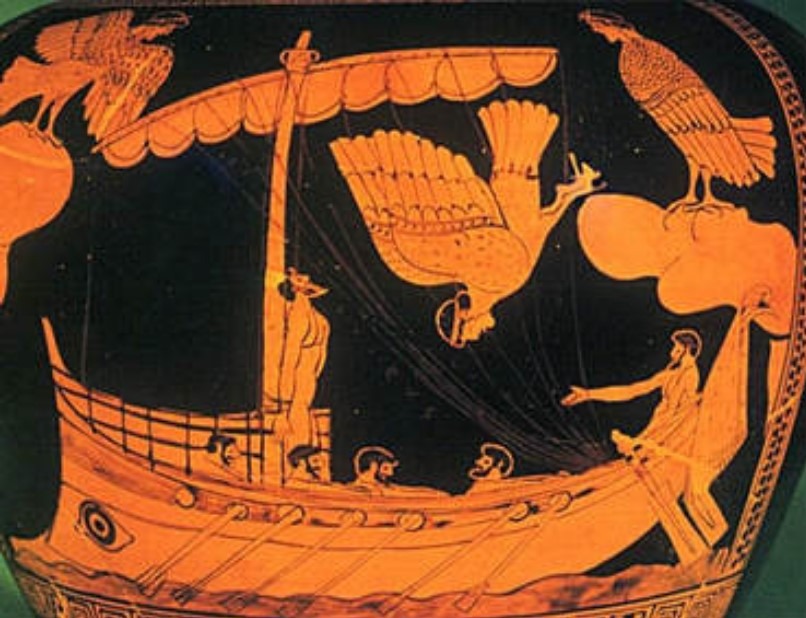
Sirens were given their wings by Demeter to help search for her daughter Persephone but, over the centuries, they have become confused with mermaids. An example of this reinterpretation can be seen in the painting below by Herbert James Draper. Sirens approach the ship of Odysseus but, as they leave the water, their mermaid tails turn into legs.
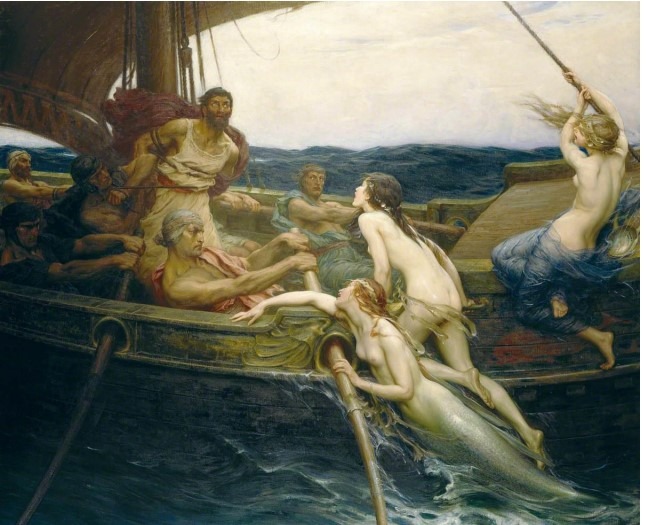
Japan has stories of human-fish called the ningyo, while the Chinese jiao ren has fish tails. When these mer-people cried, their tears turned to pearls and if a human could get one of these tears onto their tongue, it would grant eternal life. Like western portrayals, these fish people had beautiful voices but, unlike traditional associations with beauty, the Japanese ningyo were more like small demons with sharp teeth, claws and horns.
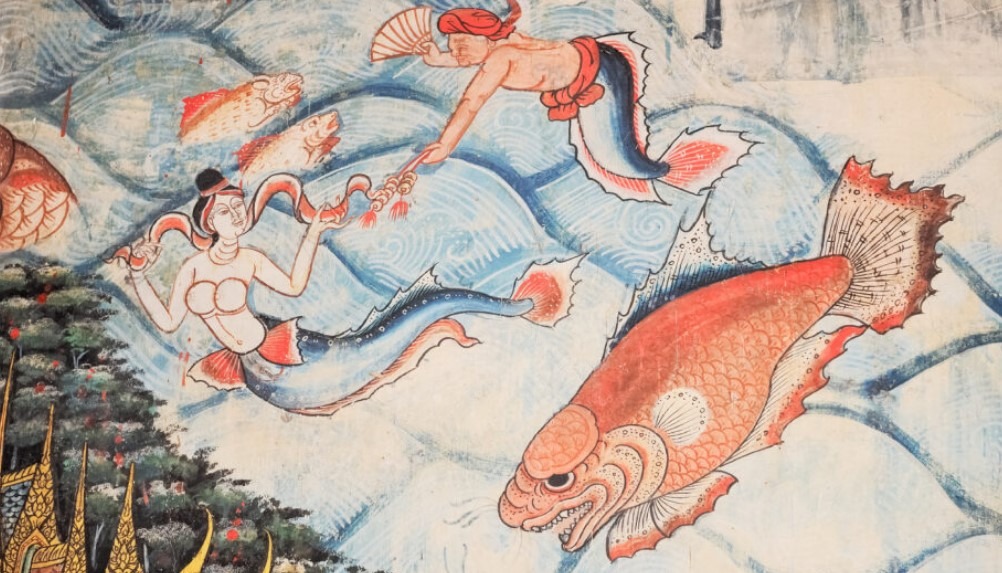
There’s more… Slavic countries have the Rusalka. In Norse legend there’s the Margygr. The First Nations people on the pacific coast of Canada tell various stories of Salmon Woman. 1001 Arabian Nights includes multiple stories about fish people including Djullanar the Sea-girl, Abdullah the Merman and Julnar the Sea-Born. There’s Melusine in France, the Sirenuca in Spain, the Ceasg maid of waves in Scotland while Welsh myth is full of stories about women like the Murga who came from the sea.
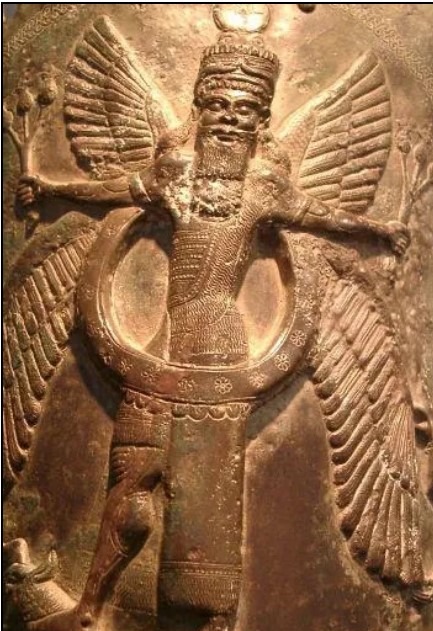
The myths are ubiquitous so could there be any truth in them?
No one can say for sure but they remind me of ancient stories of sky gods like the Mesopotamian Anu or Egyptian Isis. They appear in a range of different civilisations and cultures, and were always portrayed with wings. These stories, like mer-people, are so universal you can’t help wondering about their origins. Without getting into speculative fiction, it would be interesting to explore them in a future post.
Perhaps it was inevitable that people would anthropomorphise fish and hand the stories down through the centuries. Maybe they are misrepresentations, like the 1492 account of Christopher Columbus seeing mermaids which most people believe were manatees, or maybe, just maybe, all these tales of fantastical creatures have some common source.
As Hamlet famously says There are more things in heaven and earth Horatio than are dreamt of in your philosophy.
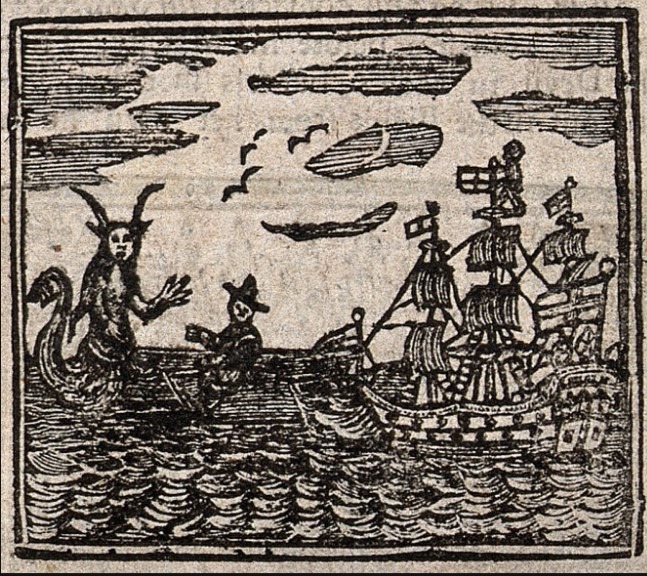
One thought on “Lets talk mermaids”